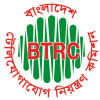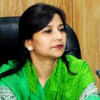Mobile tower radiation poses no harm

The harmful radiation emanating from mobile phone towers in Bangladesh is considerably lower than the safety levels set by international bodies, found surveys of Bangladesh Telecommunication Regulatory Commission (BTRC) throughout this year.
There is also no harm to the environment, said the surveys carried out by measuring radiation of the electromagnetic field (EMF), which carries wireless communication signals for connectivity, in 9 cities.
The regulator found that the radiation is 20 to 30 times lower than that of the international standard in 99 spots in Dhaka, Mymensingh, Jamalpur, Sylhet, Moulvibazar, Rangpur, Gaibandha, Khulna and Jashore.
For instance, 0.01453 milliwatts per square meter (mW/m²) was recorded when measurements were taken at the Khulna district administration office from August 22 to August 25.
The permissible threshold for exposure to electromagnetic field (EMF) is 2.106 mW/m², according to the guidelines set by the International Commission on Non-Ionising Radiation Protection, International Telecommunication Union, and World Health Organization.
Therefore, the current level of radiation poses no threat to either public health or the environment, the BTRC said in reports of the surveys released at different times.
Cellphones communicate with nearby cell towers mainly through radiofrequency waves, a form of energy in the electromagnetic spectrum between FM radio waves and microwaves, according to American Cancer Society.
Like FM radio waves, microwaves, visible light, and heat, they are forms of non-ionizing radiation.
This means they do not directly damage the DNA inside cells, which is how stronger (ionizing) types of radiation such as x-rays, gamma rays, and ultraviolet (UV) rays are thought to be able to cause cancer, it said in its website.
One of the few known effects of radio waves on the human body is a very small rise in temperature of up to 0.2 degree Celsius. But research is continuing to make sure that there are no potential long-term effects.
Earlier, Satya Prasad Majumder, vice-chancellor of the Bangladesh University of Engineering and Technology, told The Daily Star that the degree of radiation a tower emits would not cause any problem.
"You can't read without light and similarly too much light would harm the eye. A minimum level of radiation is given off the antenna and is designed taking all safety concerns into account so that people can talk on phones without facing any problem from that," he said.
"People who are concerned about it don't know anything about it. They got panicked when the world introduced 1G or 2G and they are still in panic but the world is poised to introduce 6G. If they were right, technology would not have advanced," he said.
According to the telecom industry people, baseless fears surrounding the health risks associated with radio waves emitted by phone masts have emerged as a significant obstacle to the advancement of superior telecom services, hindering the efforts of telecom and tower service providers.
The building owners, particularly in Dhaka and other metropolitan areas, are reluctant to lease out their rooftops to service providers.
This hesitancy stems from unfounded anxieties that close proximity to the antenna could result in heightened radiation exposure. Such apprehensions are impeding the expansion and enhancement of telecommunication infrastructure.
According to the BTRC officials, the commission receives over 20 requests every month from different areas for the installation of towers while about 5 to 7 requests for their removal as people fear the radio waves.
"Every year we relocate a good number of towers due to the unfounded apprehensions," Mohammed Shahedul Alam, Robi's chief corporate and regulatory officer.
The officials of the operators said they need to install hundreds of towers in cities across the Bangladesh to deliver quality services, reducing call drops and facilitating faster data speed.
Earlier this year, Grameenphone needed 300 more towers in different places only in Dhaka. After immense efforts, aided by the BTRC, it managed to roll out just over 30 towers, according to an official.
Such issues involving installation of towers mostly continues to persist, he said.
Through a new assessment, Robi critically needed to deploy around 250 more towers in the capitals.
According to Shahed Alam, chief corporate and regulatory officer of Robi Axiata, the operator was encountering challenges in deploying towers in Dhaka primarily due to several factors.
"Landlords or building owners are reluctant to provide space, driven by unscientific concerns over radiation exposure. The emergence of new apartments lacking provisions for towers further complicates the situation," he said.
"High rental pricing poses a significant obstacle, and the absence of a clear line of sight for radio frequency connectivity to other towers exacerbates the difficulties," he added.
He said the uncoordinated and unplanned urbanisation in some areas has become another major hindrance to the timely expansion of the network's tower infrastructure.
Despite that, Robi is actively trying to surmount obstacles to ensure the efficient expansion of its network in Dhaka, he added.
A Banglalink official said they also need to installs dozens of towers to facilitate quality services.

 For all latest news, follow The Daily Star's Google News channel.
For all latest news, follow The Daily Star's Google News channel. 








Comments